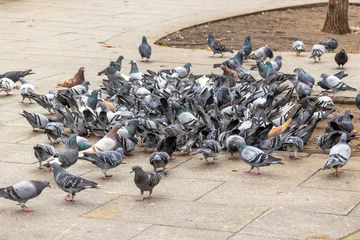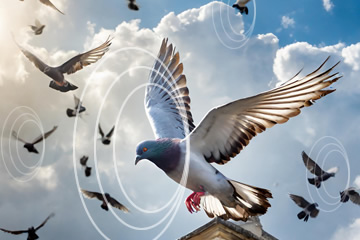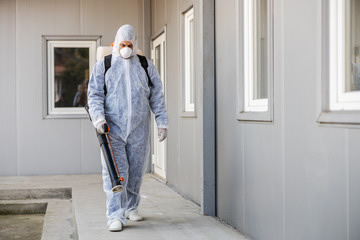- Pigeon Repellent Guide
- The Ultimate Guide to Bird Spikes
- The ultimate Guide on How to get rid of fruit flies
- Guide On How To Get Rid Of Flies Inside Your House
- How does steel wool for mice help safeguard your spaces?
- Everything you need to know about the mosquitoes | How to prevent them
- Which company is best for pest control ? How To Decide?
- What is rodent proofing and why do you need rodent proofing?
- Ultimate Guide to Get Rid Of Flying Insects UK
- Comprehensive Guide to Using Steel Wool for Mice Control
A Comprehensive Guide to Pigeon Deterrence Tactics
On April 10, 2024
Comments Off on A Comprehensive Guide to Pigeon Deterrence Tactics

Introduction:
Within the intricate fabric of global pest management, the persistent issue of pigeon infestations demands unwavering attention. These avian intruders, ubiquitous in urban landscapes worldwide, pose significant threats to public health, structural integrity, and environmental hygiene. Mitigating their impact requires a concerted, cross-cultural effort on an unprecedented scale. By recognizing the universal importance of clear skies free from pigeon nuisances, the global community can collaborate to create healthier, more harmonious environments.
Understanding the Pigeon Challenge:
Pigeon infestations pose intricate challenges on a global scale, impacting various sectors such as public health, agriculture, and urban landscapes. Their prolific breeding and remarkable adaptability render traditional control measures ineffective in managing their populations. To effectively address this issue, it’s imperative to adopt collective and innovative strategies that recognize the interconnected nature of these avian pests with both ecosystems and human well-being.
Public health concerns arise due to the potential transmission of diseases through pigeon droppings, posing risks to human populations in urban environments. In agricultural settings, pigeons threaten crop yields, impacting food production and economic stability. Additionally, their presence in urban areas not only compromises aesthetics but also undermines structural integrity through corrosive droppings.
Achieving sustainable solutions requires a holistic approach that goes beyond simple extermination efforts. It involves understanding the complex dynamics between pigeons, their habitats, and human activities. By integrating ecological principles, technological advancements, and community engagement, we can develop comprehensive strategies that mitigate the negative impacts of pigeon infestations while promoting environmental health and social well-being.

Cultural Approaches to Pigeon Deterrence:
Around the world, cultures employ various methods to deter pigeons, reflecting a blend of tradition and innovation. From discreet netting systems in Venice to
holographic repellents in Tokyo, adaptable strategies tailored to specific cultural and environmental contexts are crucial.
Scientific Insights into Pigeon Repellents:
Pigeon repellents utilize cutting-edge science, including ultrasonic devices, laser technology, and AI-driven systems, to disrupt pigeon behavior effectively.
Commercial Pigeon Repellent Products:
Commercial pigeon repellent products encompass a diverse array of options tailored to address various environmental challenges posed by pigeon infestations. Among these solutions are gel-based barriers, bird spikes, ultrasonic devices, and other innovative technologies designed to deter pigeons effectively. Each product comes with its unique features and benefits, catering to different environments and preferences.
Gel-based barriers provide physical obstacles on surfaces, deterring pigeons from roosting or landing. Bird spikes, another commonly utilized solution, create uncomfortable perching surfaces, effectively discouraging pigeons from settling in specific areas. Ultrasonic devices emit sound frequencies that disrupt pigeon communication and navigation, acting as an auditory deterrent. Additionally, reflective tape strategically placed can disorient pigeons with light, while motion-activated water sprayers startle the birds, further discouraging their presence.

When selecting the appropriate repellent, careful consideration is essential. Factors such as the environment, level of infestation, and effectiveness of the product in deterring pigeons should be weighed. Consulting with pest control professionals or conducting thorough research can aid in making informed decisions that align with specific needs and objectives. By choosing the right repellent, individuals and organizations can effectively manage pigeon populations while promoting humane and environmentally sustainable practices in pest control.
Challenges in Global Pest Control:
Managing pigeon populations on a global scale presents challenges due to their adaptability and legal/ethical considerations. A comprehensive approach involving waste management, public education, and legislative support is crucial.
The Future of Pigeon Repellent Technology:
The future of pigeon repellent technology is poised for significant advancements, driven by innovations in artificial intelligence (AI), smart drones, and Internet of Things (IoT)-enabled devices. These emerging technologies hold great promise in revolutionizing pest control efforts, offering more informed and sustainable solutions to manage pigeon populations effectively.
Artificial intelligence (AI) stands at the forefront of this technological evolution, with AI-driven systems continuously learning and adapting to evolving pigeon behavior patterns. By leveraging sophisticated algorithms and data analysis, AI enhances the precision and effectiveness of repellent strategies, enabling real-time adjustments and targeted interventions.
Smart drones equipped with advanced sensors and imaging capabilities provide dynamic and efficient tools for monitoring and managing pigeon populations. These drones offer unparalleled mobility and accessibility, allowing for targeted interventions in hard-to-reach areas and providing valuable insights into pigeon behavior and habitat preferences.
Furthermore, IoT-enabled devices create a networked ecosystem for comprehensive pest management solutions. By integrating sensors, actuators, and communication technologies, IoT devices enable real-time monitoring of pigeon activity and environmental conditions, facilitating adaptive responses and proactive measures to deter pigeons effectively.
As these technologies continue to evolve and mature, the future of pigeon repellent technology holds the promise of minimizing environmental impact, maximizing efficiency, and fostering a more harmonious coexistence between urban landscapes and pigeon populations. By embracing innovation and leveraging cutting-edge technologies, we can create safer, healthier, and more sustainable environments for both humans and wildlife alike.

Conclusion:
The global community must unite to address the pigeon problem effectively. Encouraging readers to implement pigeon repellent strategies in their communities will contribute to a cleaner, healthier environment worldwide.
Buy Bird Spikes for Pigeon Here
